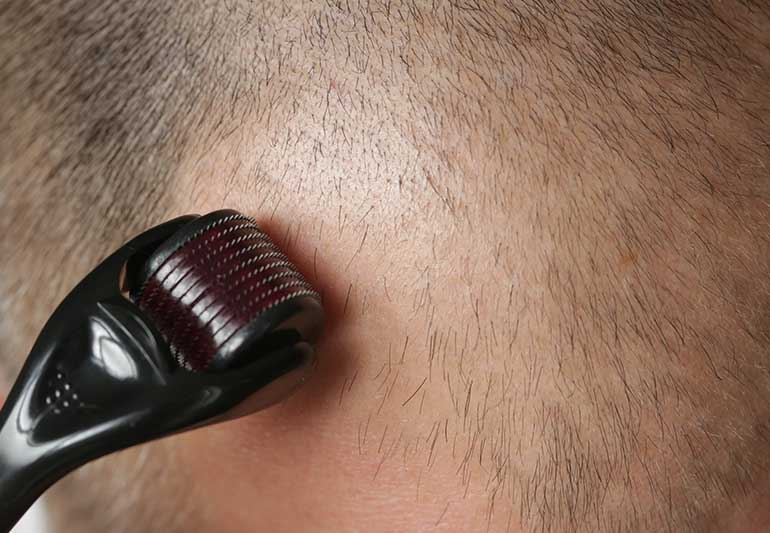As we age, our skin loses its natural elasticity and vitality, leading to wrinkles, fine lines, and sagging. The use of facial rejuvenation techniques has become increasingly popular over the years, and with advancements in technology, there are now more options than ever before. One such option is Emface, a non-surgical procedure that promises to enhance your appearance and restore youthfulness to your face. In this article, we’ll take an in-depth look at Emface before and after results, how it works, and what you can expect from the procedure.
What Is Emface?
Emface is a non-invasive facial rejuvenation treatment that uses electromagnetic energy to stimulate collagen production, resulting in firmer, tighter skin.
BTL’s Emface technology shares similarities with its predecessor, Emsculpt, a body sculpting device. However, Emface distinguishes itself by utilizing a unique combination of radiofrequency (RF) and high-intensity focused electrical stimulation (HIFES) for targeted treatment of facial elevator muscles—the frontalis, zygomaticus major and minor, and risorius.

How Does Emface Work?
Unlike Emsculpt’s use of radiofrequency (RF) and high-frequency electromagnetic stimulation (HIFEM) for fat burning and muscle toning, Emface’s HIFES increases muscle density, providing a natural lift and enhanced volume. The RF component not only aids in muscle treatment but also stimulates collagen and elastin production, further benefiting the skin’s overall appearance.
Emface works by delivering targeted electromagnetic energy to the deep layers of the skin. This energy stimulates the production of collagen, which helps to repair and regenerate the skin cells. With increased collagen production, the skin appears firmer, smoother, and more youthful.
The Emface device uses a series of applicators that emit electromagnetic energy at different frequencies. The applicators are placed on the skin, and the energy is delivered in short bursts. The sensation is often described as warm and tingling, but not painful. The treatment typically takes around 30 minutes, and there is no downtime required.
Emface Before and After Results
So, what can you expect from Emface before and after treatment? According to clinical studies, patients who undergo Emface treatment report significant improvements in the appearance of their skin. In one study, patients saw an increase of 30% in muscle tone, 37% in wrinkle reduction, 23% in lifting effect, 26% in collagen, 200% in elastin, 92.8% in volume, 92.5% in skin evenness. Overall, there was a 92.3% patient satisfaction rate.”
Emface before and after results can vary depending on the individual’s skin type and the severity of their concerns. However, most patients report smoother, firmer, and more youthful-looking skin after just one treatment.

Benefits of Emface Treatment
Non-Invasive
Since Emface is a non-invasive treatment, there is no need for incisions or injections. This means that there is no downtime required, and patients can resume their normal activities immediately after treatment.
Safe and Effective
Emface has been clinically proven to be safe and effective for facial rejuvenation. The treatment is FDA-approved and has minimal side effects.
Natural Results
The results of Emface treatment are natural-looking, meaning that you won’t look like you’ve had “work done.” Instead, your skin will appear refreshed and rejuvenated.
Long-Lasting Results
With proper skincare and maintenance, the results of Emface treatment can last for up to two years. This is significantly longer than other non-surgical treatments such as Botox or fillers.
Emface vs. Other Facial Rejuvenation Treatments
There are several facial rejuvenation treatments available, but how does Emface compare? Let’s take a look at some of the most popular options:
Botox
Botox is a neurotoxin that is injected into the muscle to temporarily paralyze it, reducing the appearance of wrinkles. While Botox is effective, it only lasts for three to six months.
Fillers
Fillers are injectable substances that are used to add volume to the face, reducing the appearance of wrinkles and fine lines. The results of fillers can last for up to a year.
Micro-Needling
Micro-needling involves the use of tiny needles to create micro-injuries in the skin, which triggers the body’s natural healing process. This leads to increased collagen production and smoother, firmer skin. The results of micro-needling can last for up to six months.
Laser Resurfacing
Laser resurfacing uses a laser to remove the top layer of damaged skin, revealing smoother, healthier-looking skin beneath. The results of laser resurfacing can last for several years.
Compared to these options, Emface offers a non-invasive, safe, and effective alternative that produces long-lasting results without the need for downtime or injections.
Conclusion
Emface before and after results are impressive, offering patients a safe and effective alternative to traditional facial rejuvenation treatments such as Botox or fillers. This non-invasive treatment stimulates collagen production, resulting in smoother, firmer, and more youthful-looking skin. With long-lasting results and minimal downtime, it’s no wonder why Emface has become an increasingly popular choice for those looking to enhance their appearance and restore youthfulness to their face.
If you’re considering Emface treatment, be sure to consult with a qualified healthcare provider who can assess your suitability and provide personalized advice on the best course of treatment for your individual needs.
FAQs
- Is Emface treatment painful? No, Emface treatment is not painful. Patients may experience a tingling sensation during treatment, but it is not uncomfortable.
- How long does the Emface treatment take? Emface treatment typically takes around 30 minutes.
- How long do the results of Emface treatment last? With proper skin care and maintenance, the results of Emface treatment can last for up to two years.
- Is Emface suitable for all skin types? Emface is suitable for most skin types, but your healthcare provider will assess your suitability during the consultation.
- Are there any side effects associated with Emface treatment? Emface treatment has minimal side effects, but some patients may experience redness or mild swelling in the treated area. These side effects usually resolve within a few hours after treatment.




